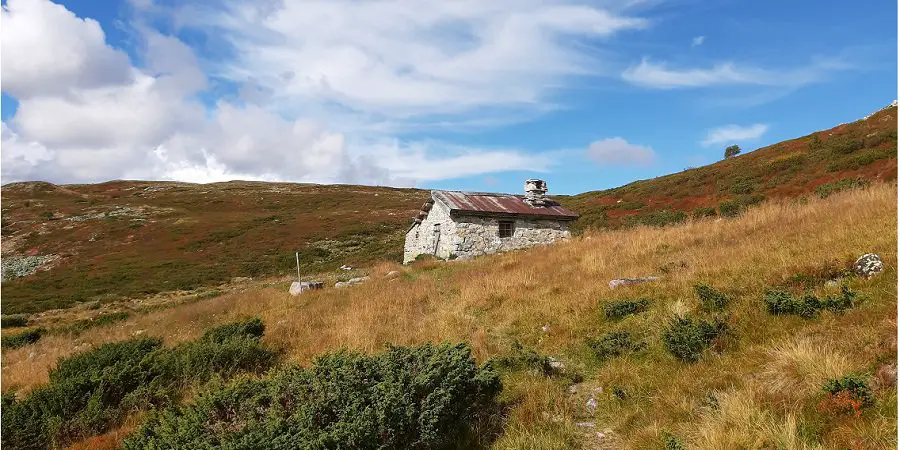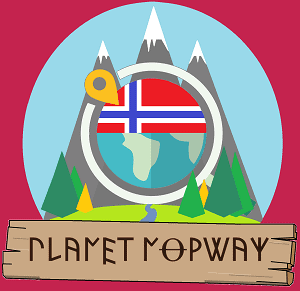Norway has the lowest population of the Scandinavian countries. Given that the country is so prosperous today one cannot help but wonder why Norway’s population is so low.
There are several reasons why Norway’s population is limited. These range from non-human factors such as climate and the lack of arable land, to historical reasons such as the black plague and subsequent depression, as well as mass emigration to the United States during the 19th century.
While the population is modest in absolute terms, the population density is actually higher than that of both Russia and Canada. Continue reading to learn more about what has impacted Norway’s population over the years.

Climate
Norway is located in northern Europe, with parts of the country being located north of the polar circle. Because of this, pretty large parts of the country are characterized as having a polar tundra or subarctic climate.
Its high latitude also makes for large seasonal variations in daylight. During summer, days are long and bright, and nights are very short.
From late May to late July in northern Norway, the sun never descends beneath the horizon, hence Norway’s description as the “land of the midnight sun”.
Conversely, come wintertime, daylight is limited to only a few hours, and in the north, the sun never rises above the horizon between late November and late January. In 2020, Tromsø, Norway’s largest city in the north saw the sun for the first time that year on January 25.
Historically, these large seasonal variations in a subarctic to temperate climate have historically made it difficult to provide enough food to sustain a large population. This can, in part, explain why Norway’s population is not bigger.
Lack of arable land
Today, only about 3% of Norway’s total land area is farmland. This is due to a combination of the tough climate, but even more so due to Norway’s mountainous terrain.
About 32% of Norway’s total land area is located above the tree line. Also, the average elevation of Norway’s land area is about 500 meters, compared to only 300 for the rest of Europe.
An average of 500 meters in itself is not very tall when compared to other countries, like the United States which has an average elevation of more than 700 meters. However, considering Norway’s location on the map and its associated climate, it matters a great deal as it makes a lot of lands not arable.
Historically, this lack of arable land has also made it difficult to provide enough food to sustain a large population and is one of the reasons why Norway’s population is not bigger.
Black plague
The black plague raved Europe between 1347 and 1351, killing between ⅓ to half of the total population. While the whole continent was severely affected, some countries and regions were hit harder than others.
Norway was one of the countries that got hit the hardest. It is estimated that roughly 60% of Norway’s population succumbed to the disease between 1349 and 1351.
This devastated the kingdom which had enjoyed relative peace and prosperity in the previous 3 and a half centuries, during which its importance in trade increased and the population more than doubled. Also, Norway lost more of its noble families compared to its nordic rivals.
This severely crippled Norway, which a few years later found itself as the weakest country in a union with both Sweden and Denmark.
It took more than 300 years for Norway to reach its pre-plague population. And without the strength to restore the kingdom, it most likely set the country back even further compared to its nordic rivals.
Emigration
Between 1825 and 1925, more than 800,000 Norwegians immigrated to North America. Most of them settled in the midwestern states of Wisconsin, Minnesota, and the Dakotas.
With the exception of Ireland, no single country contributed a larger percentage of its population to the United States than Norway.
Most of those who left were younger men and women in search of a better life. There is little doubt that this had a huge impact on Norway’s population, especially considering that there are as many Norwegian Americans today as there are Norwegians in Norway.
Why it’s not that low
Interestingly, despite the events listed above, Norway’s population isn’t really that low. That is if you look at it in terms of population density.
Today there are about 5.4 million inhabitants in Norway over a total land area of 385 207 square kilometers (148 729 square miles). This makes for a population density of 14 inhabitants per square kilometer (37/square mile).
While this is about half of that in neighboring Sweden and more than half of that of the United States it is about the same as its Scandinavian cousin Finland. Also, it is more than 3 times the density of Canada and Australia and roughly double that of Russia.
Conclusion
Norway has several disadvantages and has experienced many setbacks in terms of population growth over the years. This has certainly contributed to where Norway’s total population is today.
While the population is modest in absolute terms, the population density is on par with other countries in similar latitudes and climates. Also, being more sparsely populated brings many advantages, one of which is vast areas of wilderness that can be enjoyed by curious hikers.
